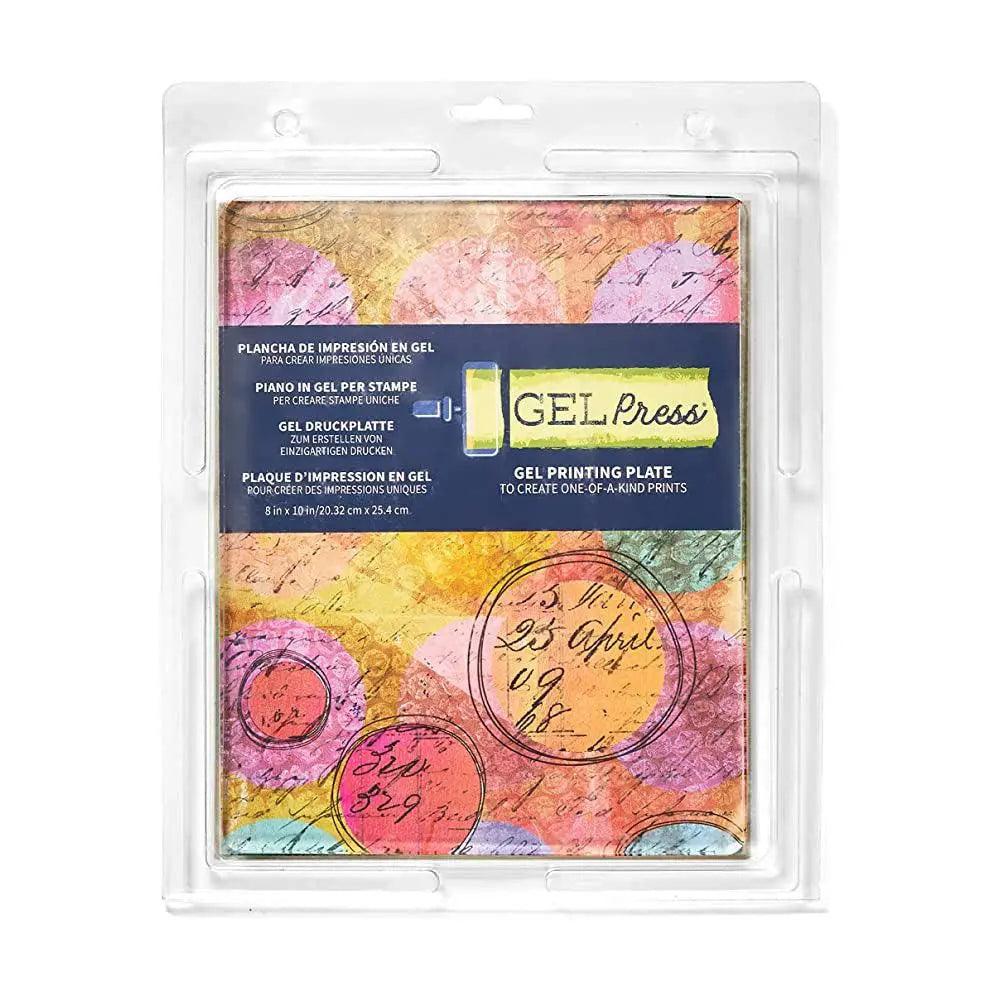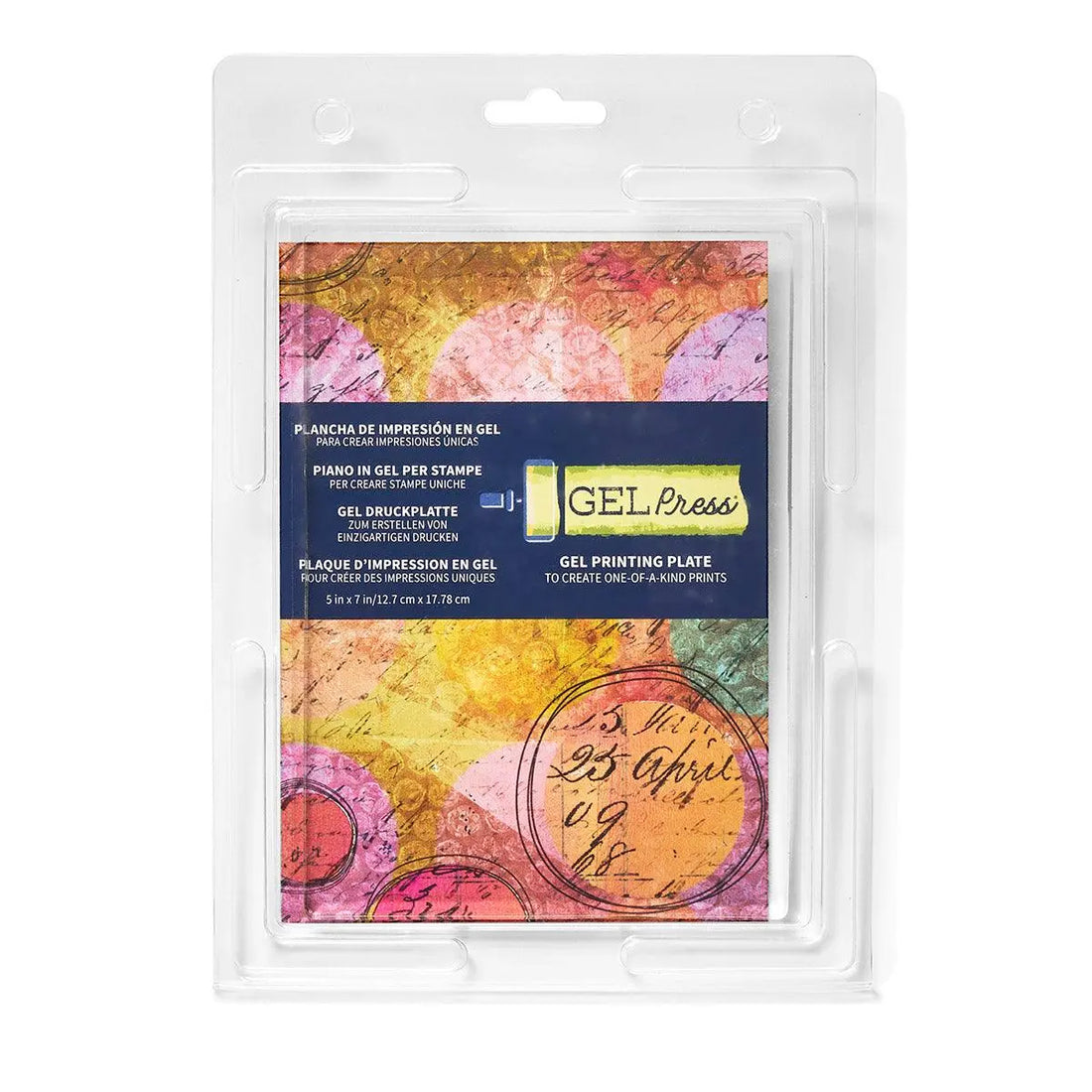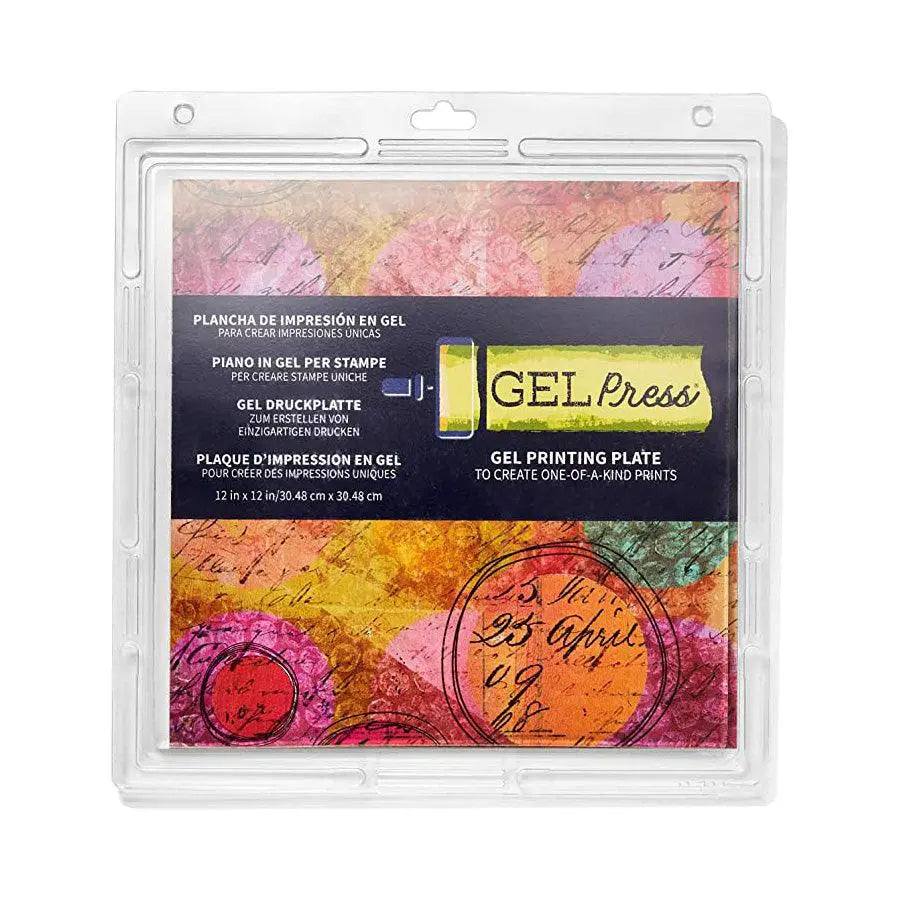Brayer: The Essential Tool for Printmaking
Key Highlights
- The brayer is a versatile tool used in printmaking and other art projects
- There are different types of brayers available, including hard rubber, soft rubber, and acrylic brayers
- Brayers are essential for even distribution of ink and paint on printing plates
- Choosing the right brayer depends on factors like durometer, width, and the type of art project
- Proper care and maintenance of brayers can extend their lifespan
- Brayers can be used for various art projects beyond printmaking, such as painting and collage making
Introduction to Brayers for Printmaking
Printmaking is a fascinating art form that allows artists to create unique and intricate designs on various substrates. One of the key tools used in printmaking is the brayer, also known as a small hand roller. The brayer is a crucial printmaking tool used to thinly apply ink or paint onto printing plates, ensuring an even distribution of color. It is an essential tool for achieving the desired effects and precision in printmaking.
Brayers are not limited to printmaking; they have become popular among artists and crafters for a wide range of art projects. From painting to collage making, brayers offer versatility and ease of use. In this blog, we will explore the different types of brayers, their uses in printmaking, and how to choose the right brayer for your art projects. We will also discuss where to find the best brayers on the market, including top sellers on Amazon.
Unveiling the Brayer: Types and Uses
The brayer is a must-have tool for block printing and other printmaking techniques. It allows artists to evenly distribute ink or paint on the printing block, ensuring a clean and precise transfer onto the printing surface.
Rubber brayers, also known as paint rollers, are commonly used in printmaking due to their ability to hold and transfer ink effectively. They are compatible with various types of printmaking inks, including oil-based and water-based inks, making them an essential tool for inking stamps and creating unique prints.
Understanding the Brayer: An Overview
Brayers come in different materials and designs to suit various artistic needs. One of the most common types of brayers is the hard rubber brayer. Made from durable synthetic rubber with a high durometer, hard rubber brayers are ideal for applying pressure and rolling down print surfaces. They are perfect for gluing applications and rolling ink onto printing plates.
Another popular material for brayers is wax, which is often used for its smooth and non-stick surface, making it ideal for gluing projects and other crafts.
Soft rubber brayers, on the other hand, have a lower durometer and offer a softer touch. They are great for applying even pressure and are often used in relief printing techniques. Soft rubber brayers are versatile and can be used for various art projects, making them a popular choice among artists and crafters.
Overall, the brayer is a multipurpose tool that can be used for printmaking, painting, and other art forms. Its versatility and ease of use make it an essential tool in any artist's arsenal.
Different Types of Brayers: A Closer Look
There are several types of brayers available, each with its own unique features and advantages. Let's take a closer look at some of the most common types:
- Hard rubber brayers: These brayers have a hard synthetic rubber roller (80 durometer) that is ideal for gluing applications and rolling down print surfaces. They are excellent for applying pressure and are commonly used in printmaking.
- Soft rubber brayers: Soft rubber brayers have a lower durometer and offer a softer touch. They are great for applying even pressure and are often used in relief printing techniques. Soft rubber brayers are versatile and can be used for various art projects.
- Acrylic brayers: Acrylic brayers are designed for specific purposes, such as gel printing and fine details. They have a smooth and firm roller that allows for precise and controlled application of acrylic paint or other mediums. Acrylic brayers are popular among artists who work with mixed media and collage.
Use of Brayers in Printmaking: Importance and Procedure
The use of brayers in printmaking is of utmost importance as it ensures an even distribution of ink or paint on the printing plate. This is crucial for achieving consistent and high-quality prints. Brayers apply much pressure to the ink or paint, allowing it to transfer smoothly onto the printing surface.
To use a brayer in printmaking, start by applying a small amount of ink or paint onto a flat surface. Roll the brayer through the ink, making sure to coat the entire roller evenly. Next, roll the inked brayer onto the printing plate, applying even pressure to ensure full coverage. Finally, place the printing paper or fabric onto the inked plate and use a baren or other tool to press the paper onto the plate. Lift the paper carefully to reveal the print.
Gel printing plates, which are a type of reusable printing surface, are often used with brayers in printmaking. These plates allow for easy transfer of ink and provide a smooth surface for printing. The brayer, a tool made of rubber and a handle, is used to evenly distribute the ink or paint on the gel plate before pressing the paper onto it. This process, using gelatin and brayers, is a crucial step in creating beautiful and unique prints.
How to Choose the Right Brayer for Printmaking
Choosing the right brayer for printmaking depends on factors such as the type of printmaking technique, the desired effect, and personal preference. Here are some considerations to keep in mind when selecting a brayer:
- Gel printing: If you frequently work with gel printing plates, consider a soft rubber brayer or an acrylic brayer. These brayers are ideal for applying ink or paint to gel plates and allow for smooth and precise application.
- Fine details: If you often work with intricate designs and fine details, consider a brayer with a narrower width. This will allow for more control and precision when applying ink or paint to your printing plate.
- Purpose brayer: If you engage in a variety of printmaking techniques, it may be beneficial to invest in a multipurpose brayer. Look for a brayer that offers a combination of soft and hard rubber rollers or one that is specifically designed for versatility.
Factors to Consider when Choosing a Brayer
When choosing a brayer for printmaking, there are several factors to consider:
- Durometer: The durometer of a brayer refers to the hardness of the roller. A higher durometer indicates a harder roller, while a lower durometer indicates a softer roller. Consider the type of ink or paint you will be using and choose a brayer with a durometer that is suitable for your needs.
- Width: The width of the brayer roller determines the coverage area when applying ink or paint. Consider the size of your printing plates and the desired effect when selecting a brayer width. A narrower roller is ideal for fine details, while a wider roller is suitable for larger areas.
- Fabric art: If you work with fabric and textile art, consider a brayer specifically designed for fabric printing. These brayers have a softer roller and are compatible with fabric inks and paints.
By considering these factors, you can choose a brayer that is best suited for your specific printmaking needs.
Top Tips for Selecting the Right Brayer
- Consider the type of printmaking techniques you will be using. For relief printing, a soft rubber brayer is an excellent choice, while a hard rubber brayer is ideal for gluing applications and rolling down print surfaces.
- If you work with gel printing plates, consider a brayer with a rubber roller or a dense foam roller. These types of brayers provide even pressure and ensure smooth ink application.
- Pay attention to the size and width of the brayer roller. A narrower roller is suitable for fine details, while a wider roller is better for covering larger areas.
- Look for a brayer with a comfortable handle grip. This will make it easier to control and maneuver the brayer while printing.
- Consider the overall quality and durability of the brayer. Look for a brayer made from high-quality materials that can withstand frequent use.
By following these tips, you can select the right brayer for your printmaking projects and achieve the desired results.
Care and Maintenance of Brayers
Proper care and maintenance of brayers are essential for prolonging their lifespan and ensuring optimal performance. Here are some tips for caring for your brayers:
- After each use, clean the brayer thoroughly with warm soapy water to remove any ink or paint residue. Use a soft brush or sponge to clean the roller and handle.
- Dry the brayer completely before storing to avoid any moisture buildup that could damage the roller.
- Avoid exposing the brayer to direct sunlight or extreme temperatures, as this can cause the rubber to degrade over time.
- Store the brayer in a cool, dry place to prevent it from getting damaged or deformed.
By following these care and maintenance tips, you can keep your brayers in excellent condition and ensure they last for a long time.
Cleaning Your Brayer: Step-by-Step Guide
Cleaning your brayer after each use is crucial for maintaining its performance and extending its lifespan. Here is a step-by-step guide on how to clean your brayer:
- Remove any excess ink or paint from the roller by rolling it on a clean piece of scrap paper or cloth.
- Prepare a solution of warm soapy water. Use a mild dish soap or a specialized brayer cleaner.
- Dip a soft brush or sponge into the soapy water and gently scrub the roller, removing any remaining ink or paint.
- Rinse the brayer under running water to remove any residual soap.
- Pat the roller dry with a clean cloth or paper towel.
- Inspect the brayer for any stubborn residue or dried ink. If necessary, use a specialized brayer cleaner or rubber cement solvent to remove the buildup.
- Once the brayer is clean and dry, store it in a cool, dry place away from direct sunlight.
By following this cleaning routine, you can keep your brayer in top-notch condition and ensure optimal performance in your printmaking projects.
Essential Tips to Extend the Lifespan of Your Brayer
- Clean your brayer thoroughly after each use to remove any residual ink or paint. This will prevent buildup and ensure optimal performance.
- Store your brayer in a cool, dry place away from direct sunlight. Extreme temperatures and sunlight can degrade the rubber and shorten the lifespan of the brayer.
- Avoid applying excessive pressure or rolling over hard objects. This can cause the roller to deform or damage the brayer.
- Do not use harsh cleaning agents or solvents that may damage the rubber roller. Stick to mild soapy water or specialized brayer cleaners.
- Use the brayer only for its intended purpose. Avoid using it for tasks that may strain or damage the roller.
- Replace your brayer if you notice signs of wear and tear, such as cracks or uneven rolling. A well-maintained brayer can last for years, but it is important to replace it when necessary to ensure optimal performance.
By following these essential tips, you can extend the lifespan of your brayer and continue to enjoy its benefits for a long time.
Innovative Ways to Use Brayers beyond Printmaking
While brayers are primarily used in printmaking, they can also be utilized in various other art projects. Their versatility makes them a valuable tool for artists and crafters. Here are some innovative ways to use brayers beyond printmaking:
- Painting: Brayers can be used to apply and blend acrylic paint on canvas or other surfaces. They are particularly useful for creating unique textures and layering effects.
- Collage making: Brayers can be used in collage making to adhere paper and other materials to a surface. They can also be used to apply adhesive or create interesting textures.
By exploring these creative possibilities, you can expand the use of your brayer and unlock its full potential in other art projects. Check out this blog of different types of printmaking for new ideas!
Using Brayers in Painting: Techniques and Tips
Brayers are a fantastic tool for painters, allowing them to explore various techniques and create unique effects. Here are some techniques and tips for using brayers in painting:
- Texture creation: Apply a layer of acrylic paint on the brayer, then roll it onto the canvas or surface to create interesting textures. Experiment with different pressures and angles to achieve the desired effect.
- Blending and layering: Apply different colors of acrylic paint on the brayer and roll them onto the canvas, creating beautiful blended and layered effects. This technique is especially effective for creating gradients and transitions between colors.
- Printmaking-inspired techniques: Apply acrylic paint on a flat surface, such as a palette or plate, and roll the brayer through the paint. Then, roll the brayer onto the canvas, creating unique patterns and textures reminiscent of printmaking.
By incorporating brayers into your painting practice, you can add depth, texture, and unique effects to your artwork.
Brayers in Collage Making: Creative Ideas
Brayers can be a valuable tool in collage making, allowing artists to apply adhesive, press down materials, and create interesting textures. Here are some creative ideas for using brayers in collage making:
- Adhesive application: Roll a brayer over an adhesive, such as glue or gel medium, and then apply it to the surface of your collage. The brayer ensures even application and helps to eliminate air bubbles.
- Material bonding: Roll a brayer over collaged materials, such as paper or fabric, to ensure they are securely attached to the surface. The pressure from the brayer helps to create a strong bond between the materials and the substrate.
- Texture creation: Apply a layer of paint or ink on the brayer and roll it over the surface of your collage. The brayer creates interesting textures and adds depth to your artwork.
By incorporating brayers into your collage making process, you can enhance the adhesion of materials and create unique textures that add visual interest to your collages.
Conclusion
Embracing the versatility of brayers in printmaking opens a world of creative possibilities. From block printing to gel printing, these tools empower artists to translate intricate details onto various surfaces effortlessly. With options like rubber, metal, and foam brayers, artists can tailor their choices to suit specific needs.
Remember, proper care and cleaning enhance the longevity of brayers, ensuring consistent quality in prints. As a multipurpose tool, the brayer transcends traditional printmaking, inspiring artists to experiment and innovate across different art forms.
Frequently Asked Questions
Why is a Brayer Essential for Printmaking?
A brayer is essential for printmaking because it ensures an even distribution of ink on the printing plate. This is crucial for achieving consistent and high-quality prints. The brayer allows for precise control and helps artists in achieving the desired levels of ink distribution.
Can I Use a Roller Instead of a Brayer?
While a roller may seem similar to a brayer, there are differences in their design and functionality. Rollers are typically larger and have a handle that extends across the width of the roller. Brayers, on the other hand, have a smaller roller and a handle that is separate from the roller. Brayers are specifically designed for printmaking and offer better control and precision compared to rollers.
How Often Should I Replace My Brayer?
The lifespan of a brayer depends on factors such as usage, care, and the quality of the brayer. With proper care and regular cleaning, a high-quality brayer can last for several years. However, if you notice signs of wear and tear, such as cracks or uneven rolling, it may be time to replace your brayer to ensure optimal performance.
Is there a Specific Size of Brayer I Should Use for Printmaking?
The size of the brayer you should use for printmaking depends on factors like the size of your printing plates and the desired effect. A narrower roller is suitable for fine details, while a wider roller is better for covering larger areas. Choose a brayer size that suits your specific printmaking needs.
Can a brayer be used for other art projects besides printmaking?
Absolutely! Brayers are versatile tools that can be used in various art projects besides printmaking. They are particularly useful for tasks like applying and blending paint, adhering materials in collage making, and creating interesting textures. Their versatility and ease of use make them a valuable tool for artists and crafters.






